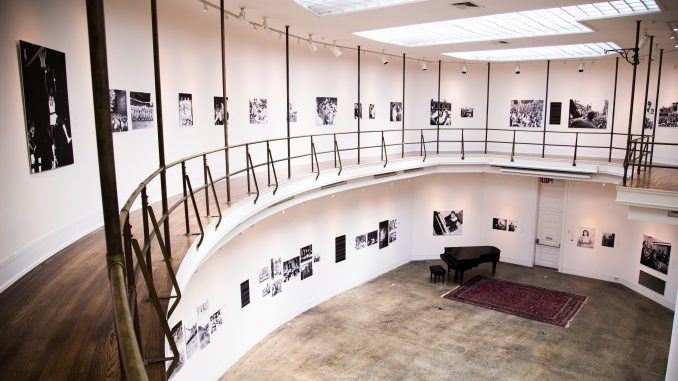
The Woodmere Art Museum in Chestnut Hill houses a collection of photographs of Martin Luther King, Jr. casually lounging on the beach in Atlantic City, student protests in Philadelphia, jazz performances and children attending church services.
The collection, “A Million Faces: The Photography of John W. Mosley” opened last month and is on display until Jan. 16. The exhibit was curated in partnership with Temple’s Charles L. Blockson Afro-American Collection, which is located in Sullivan Hall and houses more than 500,000 artifacts of Black culture. The exhibit explores Mosley’s life through his work and, by extension, the lives of his subjects.
Over the course of his career as a photojournalist, Mosley estimated that he photographed more than a million faces at Chicken Bone Beach in Atlantic City, a segregated beach for African Americans until the Civil Rights Act of 1964.
From the 1930s to the late 1960s, Mosley took more than 300,000 photos of the Black community in Philadelphia, while working for a number of the city’s newspapers. He also served as the art director and photographer for The Pyramid Club, a social organization for Black men in Philadelphia. Mosley photographed the events held at the club and compiled them in annual publications.
Blockson has curated his collection since 1984, and said Mosley was a fixture in Norristown, where Blockson grew up in the early 1930s.
“He would carry two or three cameras with him and he was there everywhere,” Blockson added.
Blockson has written more than a dozen books about Black history during the 20th century including “The Journey of John W. Mosley,” which is about Mosley’s career.

“It was a lot of fun and I find [Mosley] fascinating,” Turner said. “If you see some of his images, you can tell that he was always the observer.”
Turner also wrote an academic paper on Mosley entitled, “John W. Mosley: Cultural Warrior.”
In the paper, Turner writes: “I consider Mosley as a cultural warrior because as a photojournalist he had great vigor, courage and dedication, aggressively documenting Black life in Philadelphia and surrounding areas.”
A lot of Mosley’s photos were also taken in his own community.
The photographs in the exhibit were donated to the Blockson Collection in 1991 by Mosley’s sister-in-law Clarence Still. Of the 3,000 photographs she donated, 100 are on display in this exhibit.
Mosley primarily used two cameras, a large, boxy Graflex and a smaller, more portable Rolleiflex. Two of these cameras are on display in this new exhibit. The technology Mosley used was relatively primitive, and he only took photos with black-and-white cameras.
“He was really present at such a large range of events,” said Rachel McCay, the assistant curator at The Woodmere Art Museum. “He just took photographs everywhere. While some were certainly reproduced in the paper, there are others that he just took because he was attracted to whatever he was looking at.”
McCay said they tried to include images from every decade that Mosley worked. She added that almost everyone who was active in the social life of the Black community during that time knew Mosley.
“He was interested in capturing the vitality of Black life in all of its aspects including professional occupations, artistic expressions,” McCay said. “He was really celebrating what the Black community had achieved and all of their contributions to the cultural fabric of Philadelphia.”
Will Stickney can be reached at william.stickney@temple.edu.


Be the first to comment